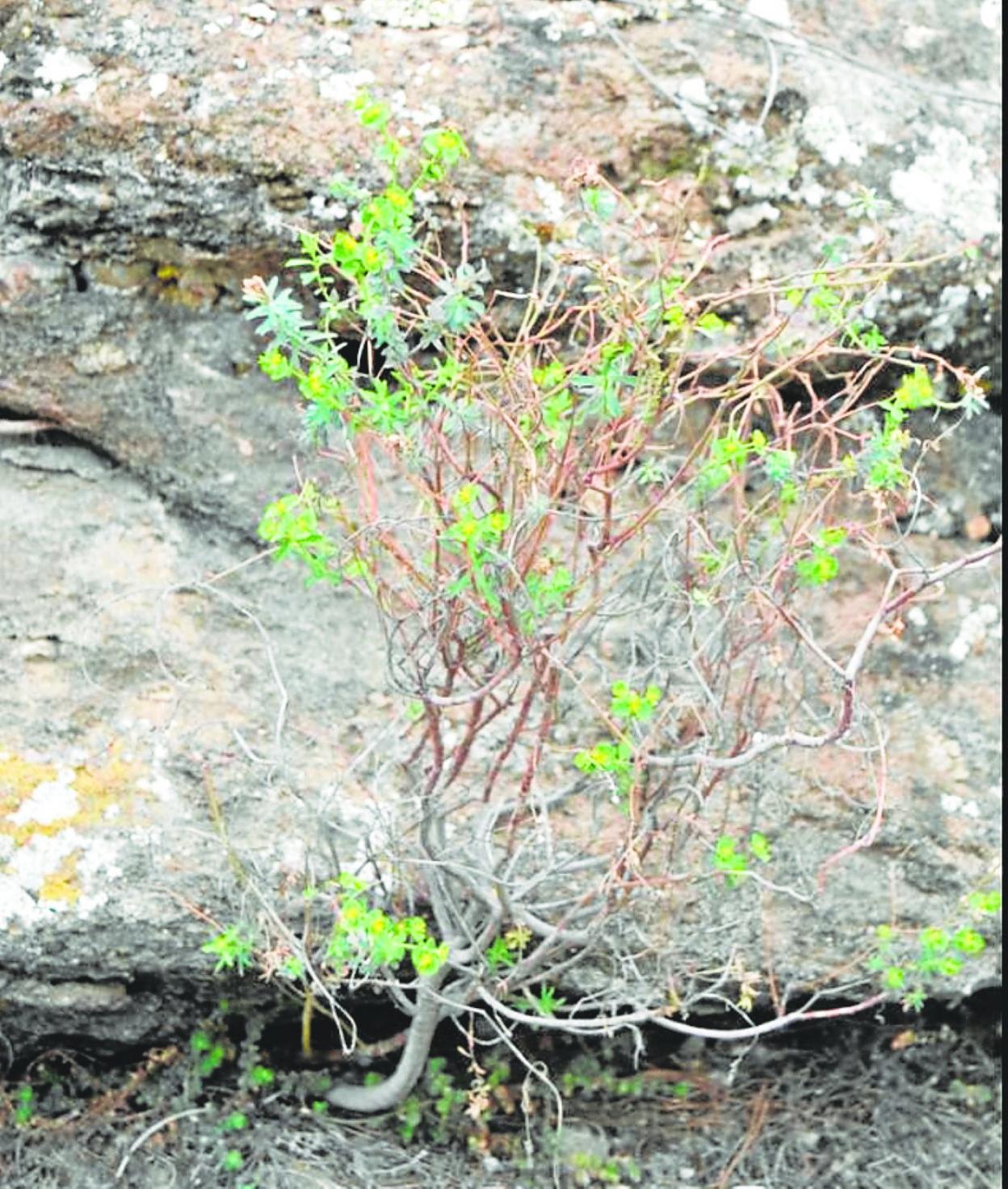New plant identified in rare find on province's moutainsides
The species, spotted by university researchers, inhabits upland parts of Pizarra and Álora and has been named Euphorbia guadalhorcensis
Friday, 10 February 2023
The Guadalhorce valley now has a new species living there. Researchers from the University of Malaga have discovered a plant that lives only in mountain areas in the municipalities of Pizarra and Álora. It has been named Euphorbia guadalhorcensis (after the area) and has been published in scientific journal Phytotaxa, dedicated to botany. The plant was discovered by Noelia Hidalgo Triana and Federico Casimiro-Soriguer Solanas, teachers and researchers at the Botany Department of the Science Faculty.
The discovery is a species of the 'euphorbiaceae' family, popularly known as the spurges. According to Hidalgo Triana, the sap of this family of plants contains a whitish, milky latex. After a year of fieldwork, the researchers describe the characteristics of this new species in a publication entitled 'A new taxon of Euphorbia (Euphorbiaceae) from the southern Iberian Peninsula (Andalusia, Spain)'.
The article explains that it is a new species for the Iberian Peninsula, and that it also has a very small endemic distribution: it has only been found in the Guadalhorce Valley, specifically in the Hacho hills in Álora and Pizarra. "This very restricted location has led us to give it the specific epithet 'guadalhorcensis'," said the researchers.
The new species was found while carrying out other research work as part of a project with Cei-Mar (International Campus of Excellence in Marine Science).
"Specifically, we went to the Pizarra sierra to study a habitat of community interest, protected by the [EU] Habitats Directive and characterised by another interesting plant in the area: Maytenus senegalensis," said Hidalgo Triana.
This species had previously been identified as another, similar euphorbia, however, its cameophytic habit (a small, rather upright bush) along with fine hairs or trichomes on its leaves and stems, as well as the size of its seeds led to it being identified as a separate species.
Marine influence
As for the reason why this plant has proliferated in the Guadalhorce valley, the researchers point to the marine influence in the area at the end of the Tertiary period, approximately 2.5 million years ago. "This has caused this area to have a particular type of soil in which this plant thrives."
However, in the Sierra de Cártama, very close to Álora and Pizarra and with the same type of soil, this plant was not found.
